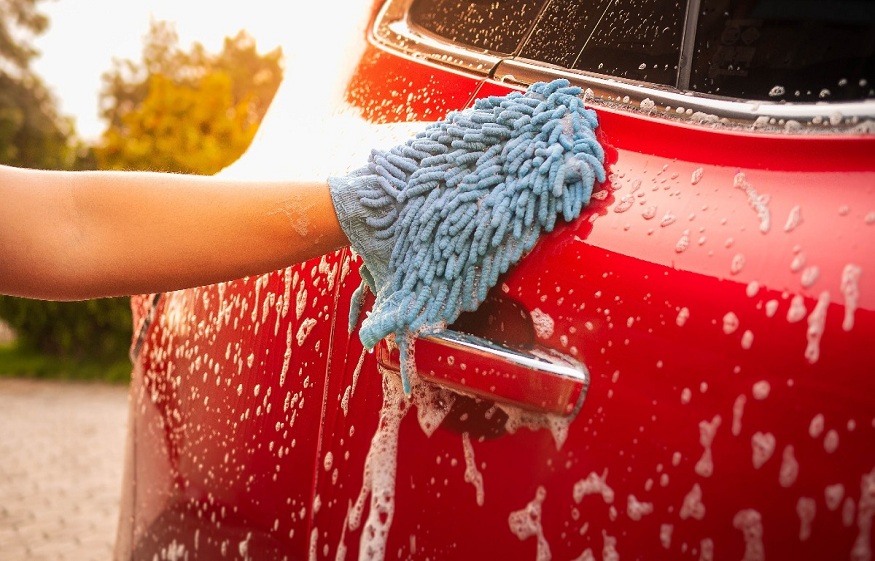Maintaining and cleaning your car regularly will ensure its longevity. On the other hand, if certain operations do not require any mechanical skills, others will have to be carried out by one of our professionls. Discover through this article how to properly maintain your car.
Monitor tire pressure
Because they connect your car to the road, your tires are a true distillation of technology. Did you know, for example, that manufacturing just one of them involves more than 200 components?
To guarantee your vehicle safe and optimal road handling, your tires must be in perfect condition. To make sure, remember to check them at least once a month. We tell you how to do it in this article.
Concerning the pressure, it is very simple to check it using a pressure gauge. If you don’t have one, go to a gas station or car wash equipped with to take care of your car an inflator. To find out the recommended pressure, refer to the recommendations indicated on the label stuck in the opening of the driver’s door or inside the fuel flap of your car. Information that you will also find in the user manual for your Renault.
Check the condition of the brakes
Check the condition of your brake pads with the naked eye? Impossible mission. To do this, go to one of our workshops . On the other hand, it is much easier to check the status of your disks. If any of them show signs of wear and/or scratches, they should be replaced.
Check levels
It is essential to check the different levels of your car at least once a month. To do this, nothing could be easier: park your Renault on a flat surface, switch off your engine, open your hood then start by checking the windshield washer fluid level. If it’s too low, fill it up. Then, the turn of the brake fluid. Use the witnesses to check its level. If necessary, adjust it. Continue with the power steering fluid – again, use the level indicator as a help – then check the engine oil. The correct level is between the minimum and maximum indications located at the end of the gauge.
Watch the fires
Regularly check the condition of your optical units as well as the proper functioning of your bulbs. If one of them is faulty, change it. To find out how, go here .
Cleaning the body of your car
Beyond the aesthetic aspect, cleaning your bodywork will protect it against corrosion and wear. Wash your car in cold water with a microfiber sponge and black soap. To rinse, mix a little water and white vinegar. To preserve the treated surfaces, do not wash your vehicle in the sun, nor when it is too hot (over 30°) or too cold (-10°).
Clean the interior of your car
Vacuum regularly to remove dust. For mats, whether rubber, PVC or carpet, we tell you how to proceed in this article.
To clean your cabin, use… coffee filters. Made from crepe paper, they hold dirt and remove it perfectly.
Finally, for plastics, lightly soak a clean fabric with fabric softener then rub gently.
Pay attention to the condition of the windshield
If it has any impacts, have it repaired. On the other hand, if it has one (or more) cracks, it is time to replace it.
To clean the windshield – as well as all the windows of your Renault – mix a little white vinegar with dishwashing detergent. Once washed, rub it with newspaper. Guaranteed result.
Check the wiper blades
Summer and winter alike, the rubber of your wiper blades suffers from extreme temperatures. Check their condition and, if necessary, change them.
Test battery status
To do this, you will need a simple multimeter that you will find in any DIY store (allow around twenty euros). With the engine on, connect the tip of the red cable to the + terminal of the battery, the tip of the black cable to the – terminal. If your battery is in good condition, the voltage will be between 12.4 and 12.7 V. A value below 12.4 V indicates that your battery needs charging.
Draining the engine
Draining ensures the proper functioning of the elements that make up your car’s engine: valves, rocker arms, camshafts, pistons, crankshaft, etc. When you drive, all these parts “come to life”: they move, collide, rub against each other. The oil plays an essential role: by lubricating them, it allows those in connection to “move” without generating too much friction. Once oil is used, it loses its properties. Consequences: the rocker arms may break, the crankshaft bearings may melt, the cylinders may be scratched, etc.
To avoid reaching such extremes, manufacturers recommend changing oil every 10,000 to 15,000 km for gasoline engines, every 7,000 km for diesel engines. Other factors come into play: year your car was put into circulation, mileage, type of engine, etc. To find out more, refer to your car’s maintenance booklet or your MY Renault account .

